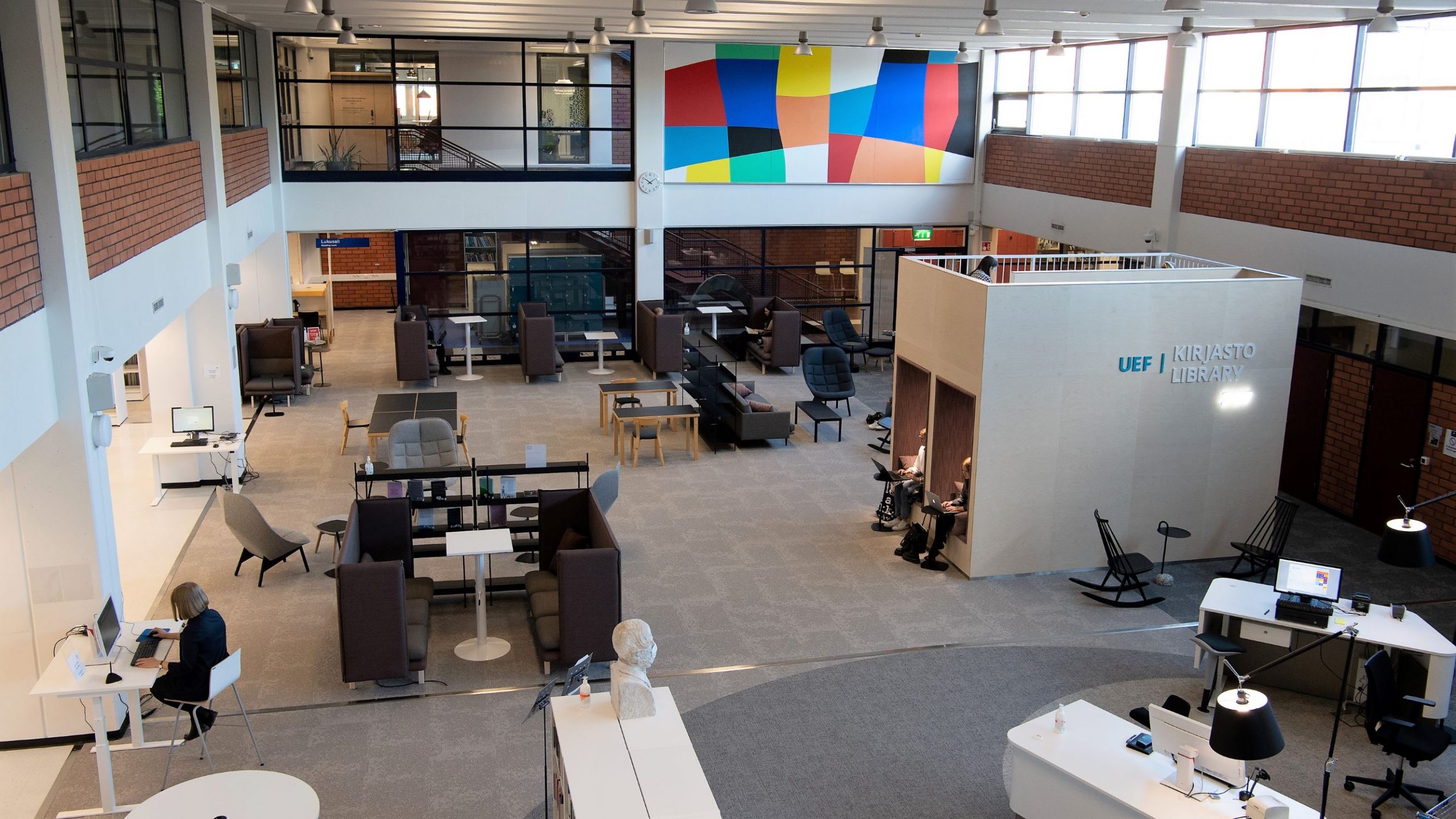Miksi kirjasto on? | Why does the library exist?
(Please, scroll down to read in English.)
Intialainen kirjastonhoitaja S. R. Ranganathan määritti vuonna 1931 kirjastotoiminnalle viisi lakia, jotka tuntuvat edelleenkin olevan ajankohtaisia, kun pohditaan mikä ja miksi kirjasto on. Yliopistokirjastojenkin olemassaoloa on viime aikoina sekä kyseenalaistettu että niiden merkitystä korostettu tutkijoiden ja opiskelijoiden arjessa.
Ranganathanin ensimmäinen laki kuuluu: kirjat ovat käyttöä varten. Kirjastossa kirjalla – ja nykyisin tietysti kaikella muulla aineistolla – on vain ja ainoastaan arvoa, kun niitä käytetään. Käyttämätön kirja tai artikkeli ei ole teos vaan se muodostuu siksi vasta vuorovaikutuksessa lukijoidensa kanssa.
Kirjaston kokoelmatyö ja olemus määrittyykin sen kautta, että se on käyttäjilleen. Mitä enemmän kirjastoa ja sen kokoelmaa käytetään, sen paremmin se on onnistunut tehtävässään.
Tätä lakia täydentävät kaksi seuraavaa, jotka määrittävät kirjastojen työkentän: jokaiselle lukijalle kirja ja jokaiselle kirjalle lukija. Kirjastojen tärkein tehtävä ei ole hyvän kokoelman kerääminen vaan se, että kirjasto auttaa aktiivisesti teoksia ja niiden tarvisijoita löytämään toisensa ja synnyttämään samalla oppineisuutta ja uutta tietoa.
Neljäs laki: säästä lukijan aikaa on tullut entistä tärkeämmäksi tiedon määrän rajun kasvun myötä. Maailman kirjojen lukumäärä arvioitiin Google Books -projektissa vuonna 2010 noin 130 miljoonaksi nimekkeeksi. Tieteellisiä artikkeleita on arvioitu julkaistavan vuodessa noin kaksi miljoonaa. Ja näiden lisäksi kaikki muu aineisto, jota uudet teknologiset keinot mahdollistavat ja jonka määrä on edellisiä vielä suurempi.
Käytännössä tämä ajan hallinta on muodostunut suurimmaksi haasteeksi myös yliopistoissa: kuinka varmistaa se, että jokainen lukija todella saa tarvitsemansa teoksensa ja miten lukijat varmistavat – ja saavat ajan – kaiken sen lukemiseen, joka on heille tärkeää. Matemaattisesti ja inhimillisesti tämä alkaa olla mahdoton yhtälö, joten jo nyt on alettu kehittää teköälyyn perustuvia järjestelmiä auttamaan tiedon hallinnassa ja seulonnassa.
Viides sääntö: kirjasto on kasvava organismi, määrittelee sen, ettei kirjasto tule koskaan valmiiksi. Se kasvaa ja muuttuu ajan myötä. Hyvä kirjasto ei myöskään unohda pitkää historiaa: se varmistaa sen, että ensimmäiset kivitaulut ja kaikki muut julkaistut aineistot löytyvät heti, jos joku lukija tarvitsee niitä. Hyvä kirjasto toimii myös toisiin alan toimijoihin liittyneenä ja entistä enemmän digitaalisena verkostona, joka jakaa kokoelmansa ja osaamisensa toisten kirjastojen, muistiorganisaatioiden ja niiden lukijoiden kanssa. Hyvä kirjasto elää aina ajassa ja muuttuu sen mukana.

Why does the library exist?
In 1931, Indian librarian S. R. Ranganathan defined five laws for libraries that still seem relevant when considering what and why the library is. The very existence of university libraries has again been questioned recently and at the same time their importance in the daily lives of researchers and students has been emphasized.
Ranganathan’s first law is: books are for use. In a library, a book — and now, of course, all other material — has only value when used. An unused book or article is not a complete work, it is formed in interaction with its readers.
The library’s collection work and essence are determined by the fact that it is for its users. The more the library and its collection are used, the better it is in fulfilling its mission.
This law is complemented by the following two, which define the field of work of libraries: every reader his or her book, and every book its reader. The most important task of libraries is not to make a good collection, but to actively help library materials and those in need of information to find each other and at the same time generate learning and new knowledge.
The fourth law: save the time of the reader has become even more important with the drastic increase in the amount of information published. The number of books in the world was estimated in the Google Books project in 2010 at about 130 million titles. It is also estimated that about two million scientific articles are published annually. In addition to these, all the other information resources made possible by new technological means, the amount of which is even greater than those already mentioned.
In practice, this academic time management has also become a major challenge in universities: how to ensure that every reader actually gets the information they need, and how readers ensure and manage to have time to read everything that is important to them. Mathematically and humanly, this is starting to be an impossible equation, so the development of artificial intelligence-based systems to help manage and screen information has already begun.
The fifth law: a library is a growing organism, defines that the library will never be completed. It grows and changes over time. A good library either does not forget the documented long history: it ensures that the first stone engravings and all other published material can be found immediately if any reader needs them. A good library also acts as a digital network, linked to other actors in the field and is increasingly sharing its collections and expertise with other libraries, memory organizations and their readers. A good library lives in time and changes with it.
Jarmo Saarti, kirjaston johtaja | Library Director